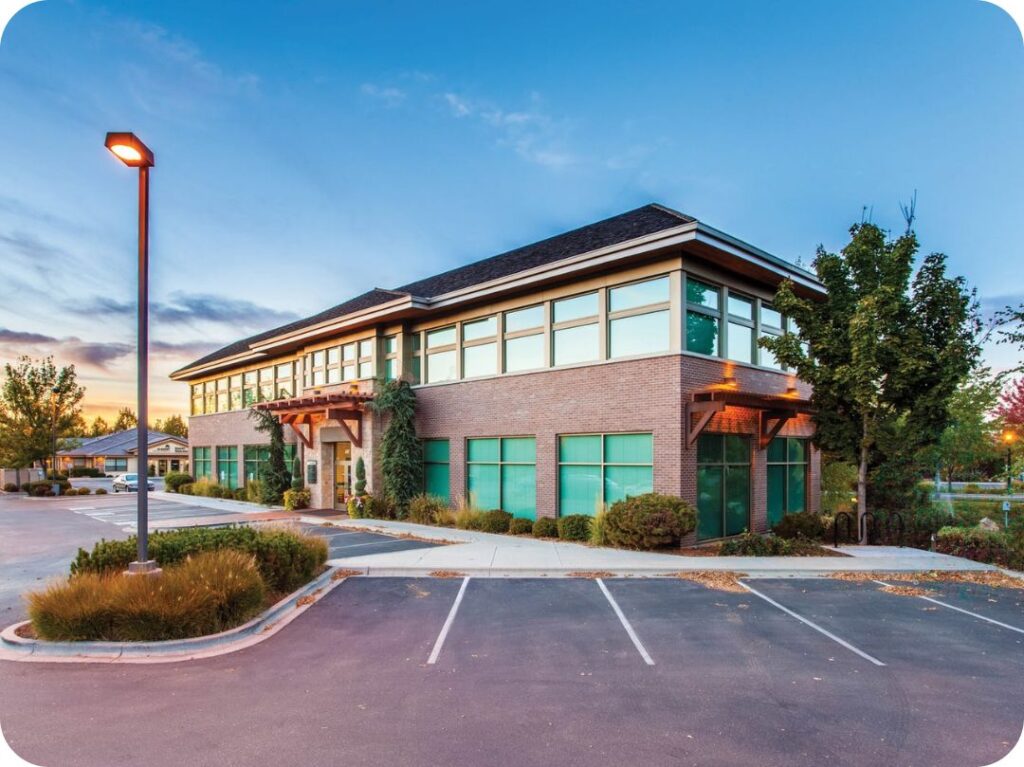Unlocking Clarity: The Best Techniques for Noise Reduction in Real Estate Photo Editing
In the world of real estate marketing, a picture is really worth more than a thousand words—it’s really worth potential customers’ attention and trust. High-best pics are a cornerstone of successful real estate listings, as they devise the primary influence and assist in bringing the property’s appeal. However, noisy snapshots can quickly flip prospective customers away. In this blog, we will explore the ins and outs of noise in real estate pictures and unveil the high-quality techniques for noise reduction in real estate photo editing workflow.
Noise Reduction in Real Estate Photo Editing
Understanding Noise
What Is Noise in Photography?
Noise, inside the context of images, is the digital equivalent of grain in movie photography. It manifests as random, unwanted specks or patterns that can make a picture seem grainy or pixelated. Noise can detract from the general high quality and professionalism of your real estate pictures, and it is specifically sizeable in images shot in low light conditions or with excessive ISO settings.
Factors Contributing to Noise
Several factors make contributions to the presence of noise in real estate snapshots:
1. ISO Settings: A better ISO placing is regularly necessary in low-light conditions to seize a well-uncovered photograph. However, increasing the ISO also increases the probability of noise. Understanding the surest ISO placing for exceptional lighting fixtures conditions is vital.
2. Sensor Size: Smaller sensors in compact cameras and smartphones are extra prone to noise compared to large sensors observed in DSLRs and mirrorless cameras.
3. Image Sensor Technology: The excellent of the picture sensor plays a massive role in noise era. High-end cameras tend to provide cleaner photos with less noise.
4. Compression: Compression algorithms used in image report formats can introduce or exacerbate noise. Understanding the impact of compression on your photos is essential.

5. Lighting Conditions: Low light conditions force the camera to use longer exposure times or higher ISO settings, both of that may make a contribution to noise.
Now that we understand the culprits behind noisy photos, let’s explore why noise reduction is imperative in real estate photo editing.
Importance of Noise Reduction
In the cutthroat real estate market, making a strong first impression is essential. Noisy photos can undermine your marketing efforts and deter potential buyers. Here’s why noise reduction is crucial:
1. Enhanced Aesthetics: Noise reduction enhances the overall appearance of real estate photos by creating a cleaner and more polished look. This, in turn, highlights the property’s features and ensures a positive first impression.
2. Professionalism: Clean and noise-free photos project professionalism and attention to detail. Buyers are more likely to trust listings that showcase high-quality images.
3. Emphasis on Details: Noise reduction allows you to preserve critical details in your photos, ensuring that architectural features and interior design elements are clearly visible and appealing.
4. Attracts Potential Buyers: Noise-free images are more likely to capture the attention of potential buyers, increasing the chances of inquiries and property visits.
Now that we’ve established the importance of noise reduction, let’s delve into the best techniques to achieve it in your real estate photo editing process.
Noise Reduction Techniques
1. Using Noise Reduction Filters
Most photo editing software, such as Adobe Photoshop and Lightroom, offer noise reduction filters or tools. Here’s how to use them effectively:
– Luminance Noise Reduction: This filter specifically targets the grainy or speckled appearance in your photos. Adjust the strength of the filter until the noise is reduced, but be cautious not to overdo it, as this can result in loss of detail.
– Color Noise Reduction: Color noise appears as random splotches of incorrect colors in your photos. Use the color noise reduction tool to remove these anomalies without affecting the overall color balance.
2. Adjusting Luminance and Color Noise Separately
In some cases, luminance and color noise may require separate adjustments. By addressing each type of noise individually, you can achieve better results while preserving the image’s overall quality.
3. Employing Third-Party Noise Reduction Plugins
For advanced noise reduction capabilities, consider using third-party noise reduction plugins or standalone software. Tools like Topaz DeNoise AI and DxO PhotoLab offer powerful noise reduction algorithms that can significantly improve image quality.
4. Manual Noise Reduction

For precise control over noise reduction, you can opt for manual noise reduction techniques. This involves using tools like the clone stamp or healing brush to eliminate noise on a pixel-by-pixel basis. While time-consuming, manual noise reduction can yield exceptional results when used sparingly.
5. Multiple Exposures and Blending
In situations with extreme noise, consider capturing multiple exposures of the same scene and blending them using HDR (High Dynamic Range) techniques. HDR photography involves merging images taken at different exposures to create a noise-free, high-quality composite image.
6. Noise Reduction Presets
Many photo editing software packages offer noise reduction presets designed for specific scenarios, such as low-light or high-ISO photos. These presets can serve as a starting point and be fine-tuned to achieve the desired result.
7. Sharpening Techniques
After applying noise reduction, use sharpening techniques to restore lost detail and add crispness to your real estate photos. Be mindful not to over-sharpen, as this can introduce a different type of artifact.
Recommended Photo Editing Tools
When it comes to noise reduction in real estate photo editing, having the right tools at your disposal is essential. Here are some recommended photo editing software and plugins:
1. Adobe Photoshop and Lightroom: Adobe’s comprehensive suite of editing tools includes powerful noise reduction capabilities, cementing its position as the preferred choice for numerous professional photographers and real estate editors.
2. Topaz DeNoise AI: This standalone software and plugin for Photoshop and Lightroom utilizes artificial intelligence to achieve impressive noise reduction results.
3. DxO PhotoLab: DxO’s noise reduction tool is renowned for its ability to effectively eliminate noise while preserving image detail and sharpness.
4. Capture One Pro: Capture One Pro offers robust noise reduction capabilities, particularly for RAW image processing.
5. ON1 Photo RAW: This all-in-one photo editing software includes noise reduction features and can be an excellent choice for real estate photographers.
6. Noise Reduction Plugins: Explore noise reduction plugins and add-ons for your chosen editing software. Plugins like Nik Collection and Noiseless Pro can complement your noise reduction workflow.
These tools can significantly simplify the noise reduction process and help you achieve professional results in your real estate photo editing.
Expert Tips for Real Estate Photo Editing
While the techniques and tools mentioned above are valuable, here are some additional tips from expert real estate photo editors:
1. Maintain a Natural Look: Avoid excessive noise reduction that results in an unnatural, overly smooth appearance. Strive for a balance between noise reduction and retaining the texture and character of the scene.
2. Consistency Matters: Ensure a consistent look and feel across all photos in a real estate listing. Apply noise reduction consistently to maintain a professional presentation.
3. Use Batch Processing: If you have multiple photos from the same property, consider using batch processing to apply noise reduction uniformly and save time.
4. Calibrate Your Monitor: Regularly calibrate your monitor to ensure accurate color and noise perception during the editing process.

5. Experiment and Learn: Noise reduction is as much art as it is science. Experiment with different techniques, settings, and software to find the approach that best suits your style and the specific needs of each property.
Quality Control
Once you’ve applied noise reduction techniques to your real estate photos, it’s essential to perform quality control before finalizing your listings. Here’s a checklist to ensure your edited photos meet industry standards:
1. Noise Assessment: Zoom in on your images to inspect for any lingering noise or artifacts, with special focus on areas containing intricate details.
2. Color Harmony: Validate the natural and precise appearance of colors in your images. Be vigilant for any color shifts or anomalies introduced by the noise reduction process.
3. Sharpness: Assess the overall sharpness of the image. If necessary, apply sharpening techniques to enhance detail.
4. Consistency: Review all photos in the real estate listing to ensure a consistent look and feel. Confirm that noise reduction settings are applied uniformly.
5. Aspect Ratio and Cropping: Ensure that aspect ratios are consistent and that all photos are appropriately cropped.
Conclusion
Initial impressions are crucial in the world of real estate marketing. High-quality, noise-free photos can be the key to attracting potential buyers and presenting properties in the best light. Noise reduction techniques, whether applied using built-in software tools or third-party plugins, can significantly enhance the quality and professionalism of your real estate photos.
As you embark on your journey to unlock clarity in real estate photo editing, remember that practice and experimentation are essential. Noise reduction is a skill that improves with time and experience. By consistently applying these techniques and fine-tuning your approach, you’ll be well-equipped to showcase properties in the best possible light and stand out in the competitive real estate market.
So, go ahead, embrace noise reduction, and let your real estate photos shine.
